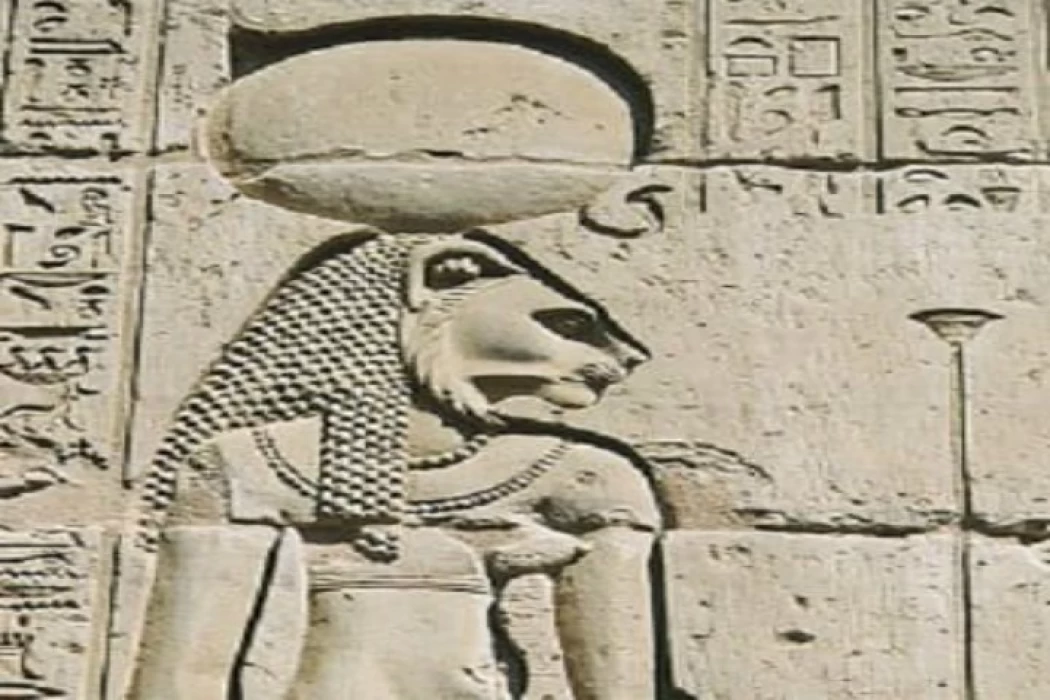
Goddess Tefnut | Goddess of Humidity and Rain
Goddess Tefnut
Segundo a mitologia egípcia, Tefnut teve origem com o seu irmão Shu, através dos fluidos corporais do deus Atum, eles foram os primeiros a povoar a terra, deles nasceram Nut, deusa do céu, e Geb que era o deus da terra, que deu origem aos outros deuses egípcios.
Goddess of Humidity and Rain
A divindade da humidade tem uma forma humana, com a cabeça de uma leoa, contudo, alguns hieróglifos representam-na como uma serpente com a cabeça de uma leoa, tem um disco solar na cabeça, o que se refere a uma ligação directa com Atum, Deus do Sol.
A representação de uma mulher com cabeça de leoa deve-se a uma lenda egípcia, que narra que a deusa teve uma discussão com o seu marido, Shu, o deus do ar, e fugiu de casa. Tefnut tomou a forma de uma leoa, para atacar qualquer um que se aproximasse, contudo, Thot, o deus da sabedoria, convence-o a regressar a casa.
Tefnut juntamente com Shu deixou Nut e Geb como descendentes, estes, por sua vez, deixaram como descendentes os outros deuses egípcios, entre eles Osíris, o deus egípcio da ressurreição; Ísis, a deusa do trono e mistério; Seth, o deus do deserto e Nefthys, a deusa protectora, mãe de Anúbis, o deus do submundo.
Gostaria de viver uma viagem através da cultura e mitologia egípcia antiga? pode fazê-lo acontecer e passar um dia a visitar Abydos, Giza, Luxor, Assuão para ver os túmulos dos faraós adornados com cenas muito claras, detalhadas e belamente pintadas das várias divindades do antigo Egipto, bem como muitos outros locais, cidades, aventuras e coisas para fazer no Cairo, pode tentar reservar um dos nossos tours ao Egipto e pacotes de viagens ao Egito muitos grupos privados de excursões guiadas de um dia no Cairo a partir do aeroporto e tours de um dia no Egipto para explorar a capital do Egipto, Cairo pode verificar muitos dos itinerários do Egipto ou fazer um dos nossos tours de um dia completo no Cairo como
According to Egyptian mythology, Tefnut originated with his brother Shu, through the bodily fluids of the god Atum, they were the first to populate the earth, from them, were born Nut, goddess of the sky, and Geb who was the god of the earth, who gave rise to the other Egyptian gods.
The deity of humidity has a human form, with the head of a lioness, however, some hieroglyphs represent it as a serpent with the head of a lioness, it has a solar disk on the head, which refers to a direct link with Atum, God of the sun.
The representation of a lioness-headed woman is due to an Egyptian legend, which narrates that the goddess had an argument with her husband, Shu the god of the air, and ran away from home. Tefnut took the form of a lioness, to attack anyone who approached, however, Thot the god of wisdom, convinces him to return home.
Tefnut together with Shu left Nut and Geb as descendants, these, in turn, left as descendants the other Egyptian gods, among them Osiris, the Egyptian god of resurrection; Isis, the goddess of the throne and mystery; Seth, the god of the desert and Nephtys, the protective goddess, mother of Anubis, the god of the underworld.
Egyptian gods were often depicted as part human and part animal, because in ancient religion certain animals were considered sacred because the spirit of a god, such as the lioness or lion, was believed to inhabit these animals, which gave the god the reverence to be worshipped, and whose body granted him eternal life. Tefnut had the body of a young woman and the head of a lioness or lion. She united with her brother and husband Shu to form the lion twins.
The center of worship and the temple of the gods "Tefnut" and "Shu" was in the city of "Leontopolis" in the Egyptian Delta, and it was possible for the pharaoh and priests before entering the temple to throw a stone into a deep pool before they entered the inner sanctuary of the temple to start the worship rituals, as a kind of purification for them and allowed ordinary Egyptians to come to the doors or front of the temple square for blessings and gifts.
The structure inside the temple consists of heavy gates leading to a huge hall with large stone columns on its sides, and then a series of rooms and these rooms or circles in which candles and incense are burned to purify the air of the temple, while the lighting in the temple and rooms is greatly reduced to create a deep atmosphere of mystery and the temple has a shrine inside a stone containing a large statue of the rain goddess, and there is a large statue in the inner sanctuary of the temple. This sacred statue has a special priest who performs prayers and rituals, and another priest is responsible for the statue's cleanliness, rehabilitation and washing, then the statue is dressed in wool, eye makeup, powder on the lips and layers of holy oil rubbed on the statue's forehead, and ordinary Egyptians celebrate it on festivals and holidays with processions with carnival rituals.
Legends claim that the goddess showed an angry side. Angered and jealous of the supreme worship shown towards her descendants, she fled to Nubia.
She returned only when the god Thoth gave her the title of "Honorable". Earlier pyramid texts claim that the goddess produced pure water from her vagina.
Other legends claim that Shu was separated from his sister, wife, and son. Later, Jeb challenged his father, causing him to withdraw from the world. Hence, Jeb took his mother Tefnut as the head of the Queen's consort since he was in love with her.















